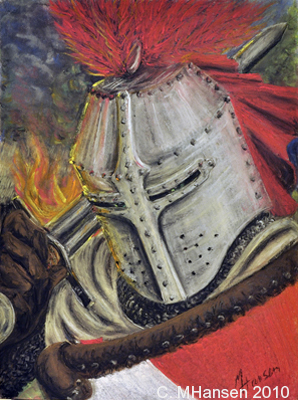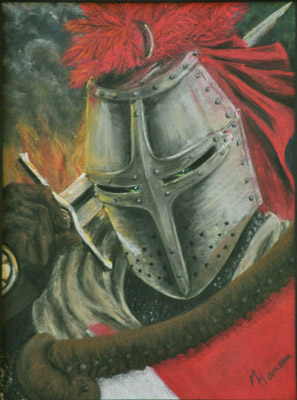Posts: 64 Location: Seattle, WA USA
Mon 13 Dec, 2010 2:43 am
Oh, this is awesome feedback! THANK YOU!
Chad Arnow Wrote:
"Not many
great helms have the metal reinforcing bands that are so often seen in modern reproductions."
Uh, Chad, the Maciejowski Bible is loaded with helms that use those reinforcing bands. :confused: Maybe they were most popular in Poland?
"There is at least one famous helm (dated to ca. 1280), shown in our great helm spotlight, that has the reinforcing bands...The bands are riveted on, as you can see some and holes where others are now missing."
Chad! You Rock! I found, and then lost that image, but it was the one I was trying to copy for my illustration. Thanks so much for posting it here!. :D
"A typical Type XII will not have a hexagonal section at all, but rather a lenticular section...Type XII spotlight...has many examples of this form. It's worth checking out."
Oakeshott XII is lenticular. Good. Lesson learned. I'm still stuck on that sword tip configuration. I did some sketches from the spotlight article. i just blew it in execution--simple as that. I love that configuration chart.
Christopher Domanski wrote:
"I have never seen a leather rim on any sheld...Leather was indeed used on
shields, but usually in form of thin parchment leather that covered the entire front and back and was not visible under canvas and paint."
Hi, Christopher: It's nice to meet you. I stole that leather rim idea from a couple of members who posted shields they owned or made. They were both heaters, so I figured I was in the ballpark. I owe them each credit when I find their posts again. Were the shields always wood base, or did they use metal? As far as the use of that rim in the illustration, chalk it up to another example of artistic license.
Christopher, Sam, and Chad:
Thank you so much for the nice complements. As I stated, art imitates life, but it also tells a story. I believe some level of historical accuracy, will give more relevance to my paintings.


